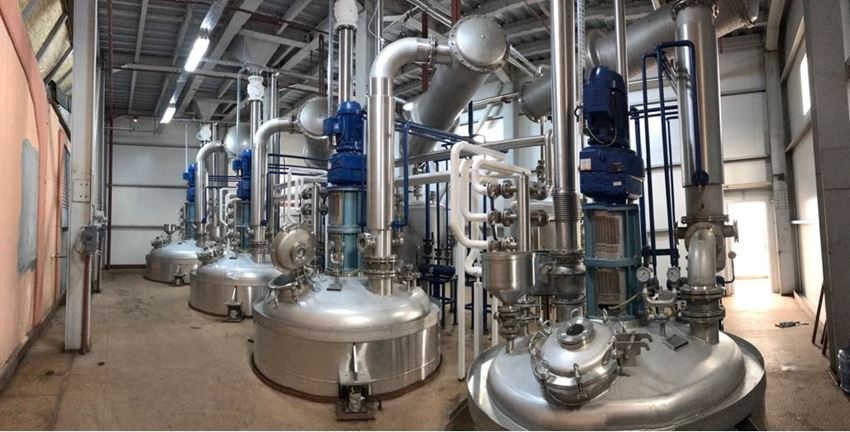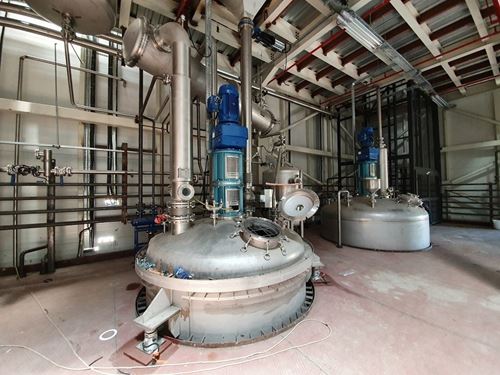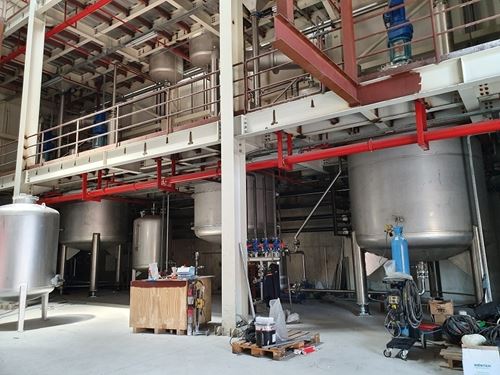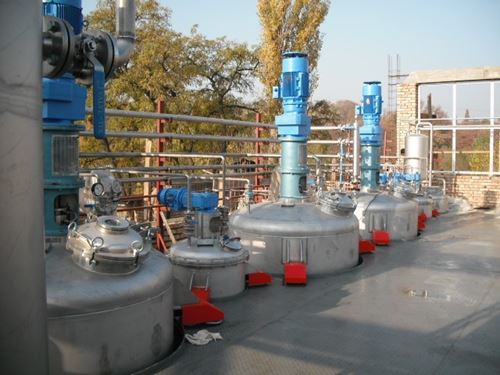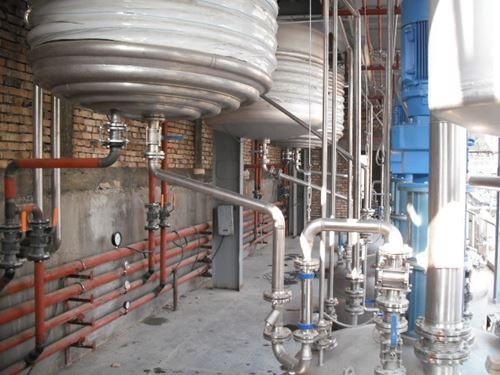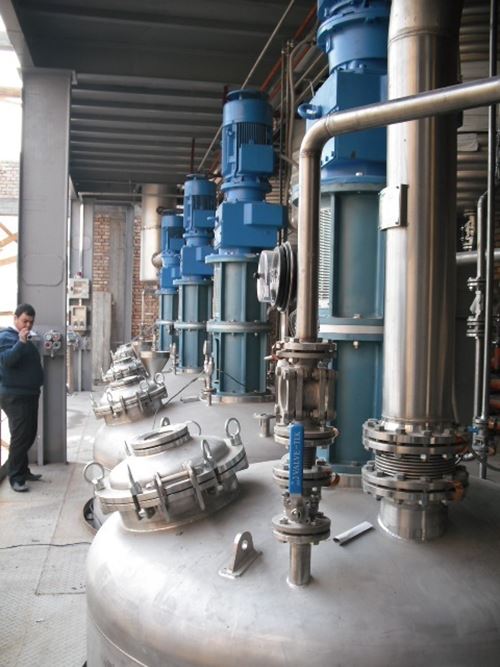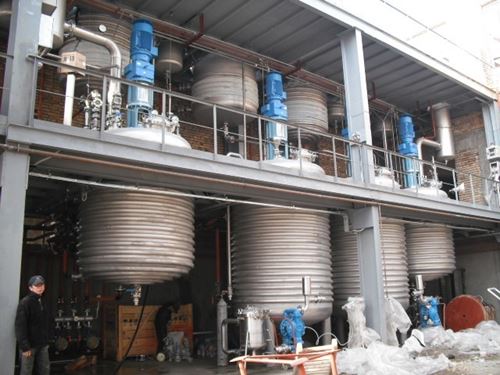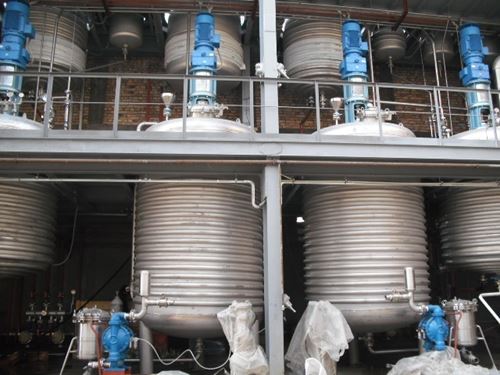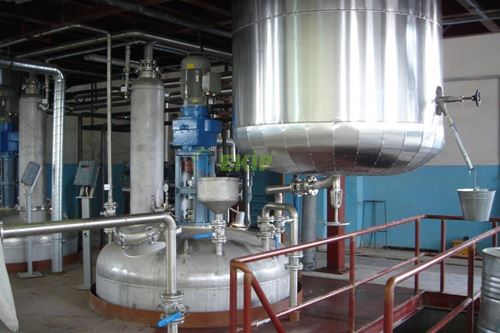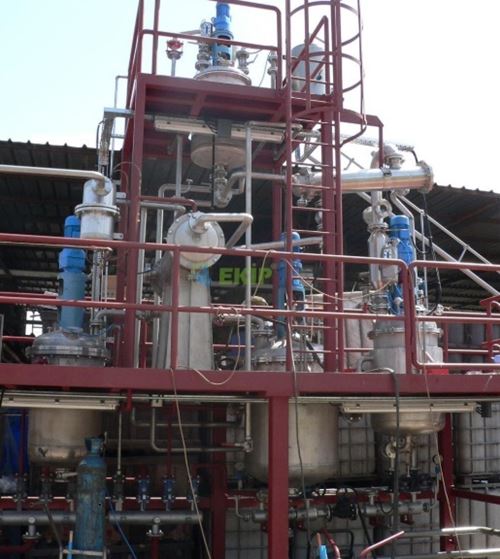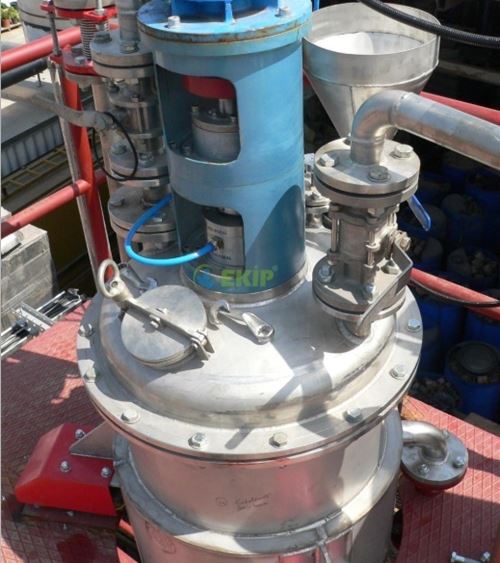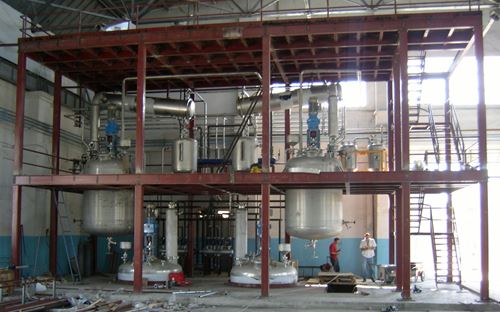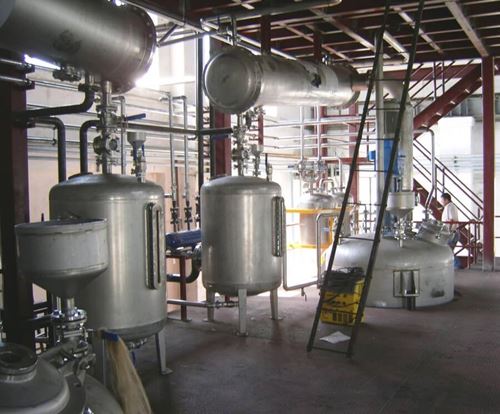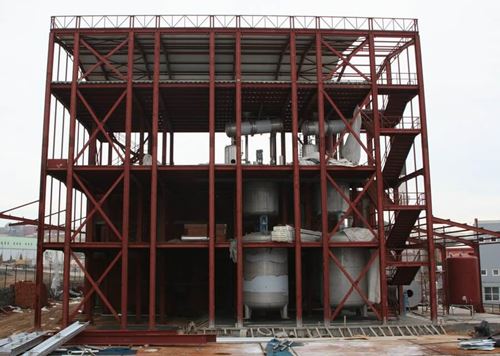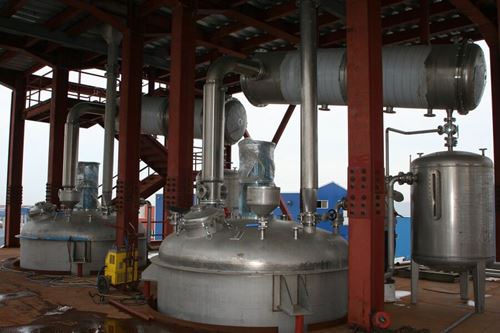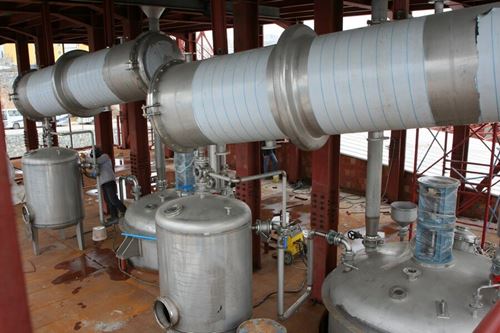Alkyd Resin Plants
| ALKITE RESINS |
|
Alkyd production processes:
1) Fatty acid method: Fatty acids, polyhydric alcohol and dibasic acid total charge is heated to 210-250 ° C and kept at this temperature until it reaches the desired properties. If polyhydric alcohol and dibasic acid are heated before the addition of fatty acid, there will be a severe increase in viscosity. The molecular weight change of the product is very wide. In addition, after the dryer is added, its stability is low and early drying is seen on the surface as a film.
2) Fatty acid method: Fatty acids, fat, polyol and dibasic acid are again heated to 210-250 ° C and kept until the desired properties are reached at this temperature. Compared to the monoglyceride method, films are obtained, the upper part of which is quick and the inner parts of the interior are slowly drying. There is also a danger of partial blocking during the reaction.
3) Oil dilution method: It is carried out by adding high temperature oil to alkyd prepared with one of the other methods. It increases the tendency of the product to be applied with a brush. But films are soft and flimsy. Color also deteriorates quickly.
4) Alcohol-free or monoglyceride method: Firstly, partial ethers are prepared with oil, mostly glycerin and sometimes with another polyol. The remaining hydroxyl groups are then reacted with dibasic acid. The first stage is carried out only around 280 ° C without catalyst or around 230-240 ° C with the catalyst. It is understood that the first stage is completed, while the oil is not dissolved in methanol, the resulting monoglyceride is dissolved in twice the volume of methanol. After that, the temperature is lowered to around 200 ° C, dibasic acid, and sometimes some more polyol is added, and the temperature is raised to 230-250 ° C. The product is kept at these temperatures until it reaches the desired properties.
Factors that affect manufacturing:
Factors affecting the manufacturing include raw materials, main reactions, addition sequence, mixing speed and means, reaction temperature and environment, and catalysts. Raw materials are mainly polybasic acids, polyhydric alcohols and fatty acids. Among the polyabasic or, more precisely, dibasic acids, phthalic acid isomers and mainly phthalic anhydride are aromatic acids. Unsaturated maleic anhydride and fumaric acid are also important. Although aliphatic acids give soft products with glycerin in proportion to the length of the carbon chain between the carboxyl groups, phthalic acid isomers, where moleic acid and carboxyl groups, which do not have such a chain, are tightly attached to the benzene ring and are unable to change position, provide hard and brittle resins. The most important monobasic substance of alkyd resins is fatty acids. Almost all of these are obtained from vegetable oils, namely glycerides. The most important are fatty acids, which are stearic, oleic, linol, linolen, oleostearic, risinol and dehitrate risinol. Dryers added to alkyd, oil soluble, Co, Mn, Zn and Pb etc. salts. Usually they are added at the rate of 0.1%-1%. |
 English
English